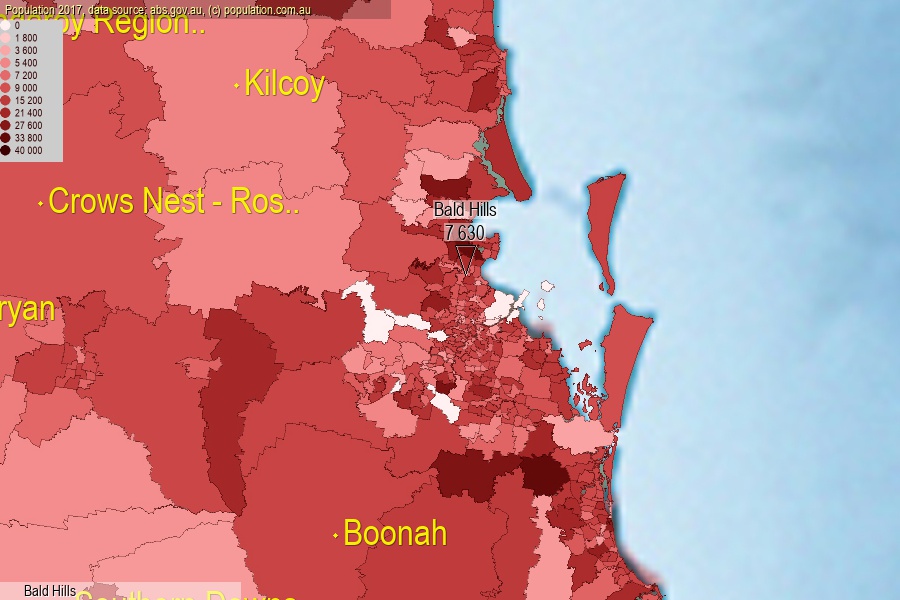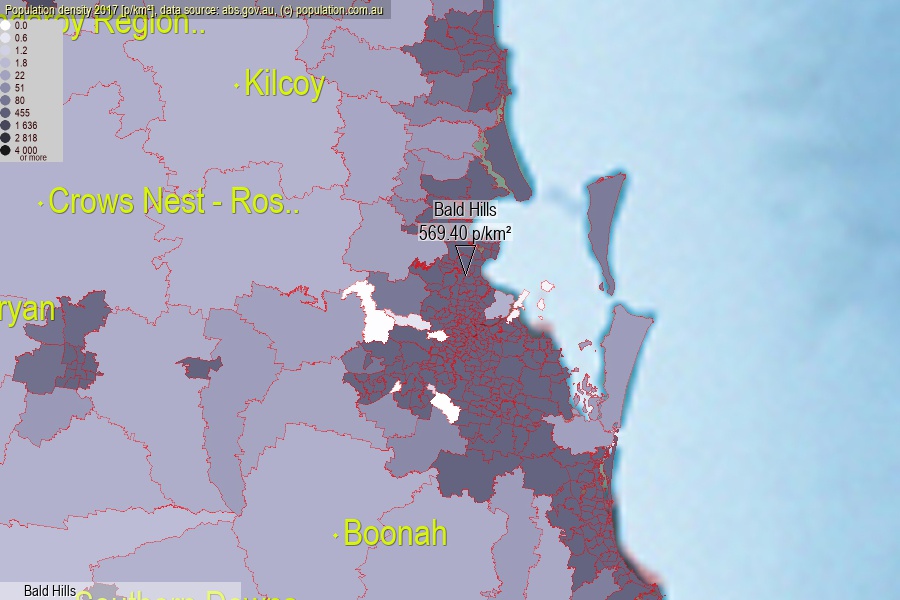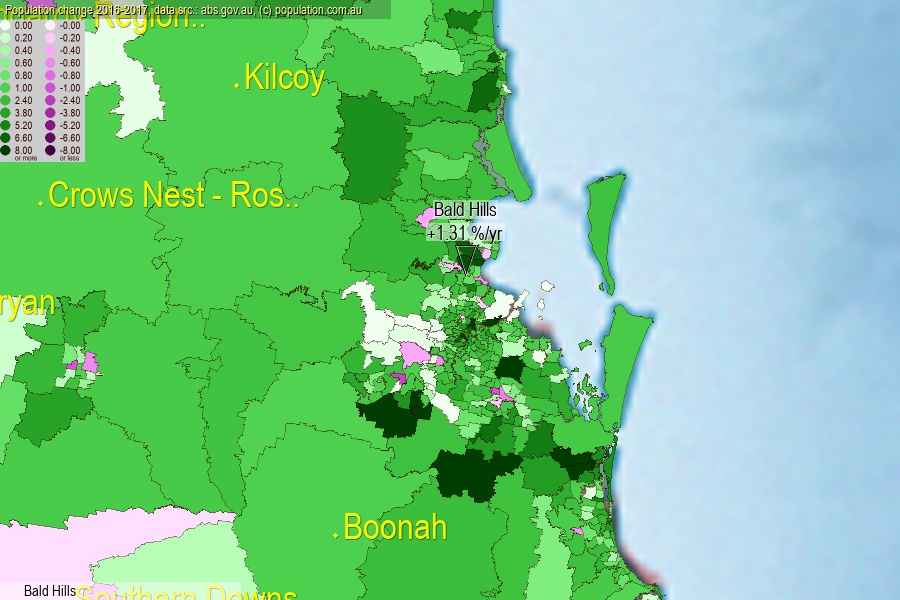 population.com.au
population.com.auLast official estimated population of Bald Hills (as Statistical Area Level 2) was 7 630 people (on 2017-06-30)[2]. This was 0.03% of total Australian population and 0.153% of QLD population. Area of Bald Hills is 13.40 km², in this year population density was 569.40 p/km² . If population growth rate would be same as in period 2016-2017 (+1.31%/yr), Bald Hills population in 2025 would be 8 470. [0]



Click to enlarge. Bald Hills is located in the center of the images.
Population [people], population density [p./km²] and population change [%/year] [2]
View borders » (new window) [4]
[1991-1992] +2.86 %/Yr.
[1992-1993] +2.54 %/Yr.
[1993-1994] +1.60 %/Yr.
[1994-1995] +1.68 %/Yr.
[1995-1996] +0.65 %/Yr.
[1996-1997] +0.04 %/Yr.
[1997-1998] -0.03 %/Yr.
[1998-1999] -0.09 %/Yr.
[1999-2000] +0.11 %/Yr.
[2000-2001] -0.70 %/Yr.
[2001-2002] -0.12 %/Yr.
[2002-2003] +0.32 %/Yr.
[2003-2004] +4.06 %/Yr.
[2004-2005] +1.98 %/Yr.
[2005-2006] +1.18 %/Yr.
[2006-2007] +3.18 %/Yr.
[2007-2008] +3.84 %/Yr.
[2008-2009] +7.14 %/Yr.
[2009-2010] +1.93 %/Yr.
[2010-2011] +0.25 %/Yr.
[2011-2012] +1.17 %/Yr.
[2012-2013] +2.39 %/Yr.
[2013-2014] +0.54 %/Yr.
[2014-2015] +0.34 %/Yr.
[2015-2016] +0.64 %/Yr.
[2016-2017] +1.31 %/Yr.
[0] Calculated with linear interpolation from officially estimated population
[1] Read more about SA2 and Australian Statistical Geography Standard (ASGS) on abs.gov.au
[2] Population data from Australian Bureau of Statistics (Population and density: 2017; change: 2016-2017)
[3] Digital Boundaries: Australian Statistical Geography Standard (ASGS) 2016.
[4] Border coordinates are simplifyed using Ramer-Douglas-Peucker algorithm.